A hoy-hoy and Happy Valentine’s Day! Swirls and dips, flavored, tinted, or adorned with brightly colored sprinkles of all shapes and sizes; frosting is what most people look forward to when eating cake. From sweet and thick to light and fluffy, to creamy; frosting is what literally and figuratively brings not only cake together, but the people around the cake. Everyone has a favorite. However, tastes can change over time. Most of my family loves cream cheese frosting, my friend loves whipped cream frosting, and I adore the German or Ermine frostings (and the Swiss Meringue). As far back as I can remember, I have always loved cake. I have loved the bright colors of our 1980’s cakes, the sweet, sugary scent of the cake, frosting, and sprinkles, and best of all, the anticipation of having to wait for said cake. Our parents made us eat food, then sing, then finally, finally, the cutting of the cake, with its 2 inches of glorious frosting! And if you got a flower?! You had been blessed by the cake gods, indeed!
Okay people, we have been through a lot together. Therefore, you know me. You know my love of cake. However, this post, this post is my love letter to all things frostings! Throughout this post, I will go through and explain the different types of frostings. Also, most excitedly, I am introducing the beautiful, generous, and amazing baker that is my cousin, Shea!! There is one frosting that I have not attempted yet and she has (the adventurer that she is!), so I will have her explain French Buttercream accompanied with her pictures. Without further adieu:
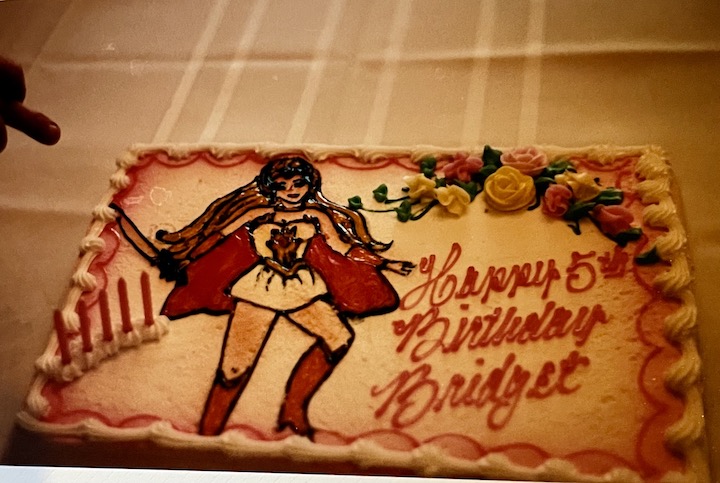
Happy Valentine’s Day to all, but especially to: Frosting!
American Buttercream
To my original love: Even though I have grown up and my tastes have changed, you will forever have a place in my heart. You gave me my first taste of the good stuff and for that, I will always love you, even it you are too saccharine for me now; but this is not to say that I will never come back for a visit every once in awhile.
American Buttercream is honestly what most of us grew up with. It is made with powdered sugar, butter, and vanilla. Whip the tar out of it. Please refer here for my take on the Great American Buttercream. While it is very easy to make and decorate with, it is extremely sweet. Honestly, most of us do outgrow it as we get older. I thought I would never not love American Buttercream, but as I go through the list of frostings, there are a plethora of choices that are just as creamy and soft and not so sickeningly sweet.
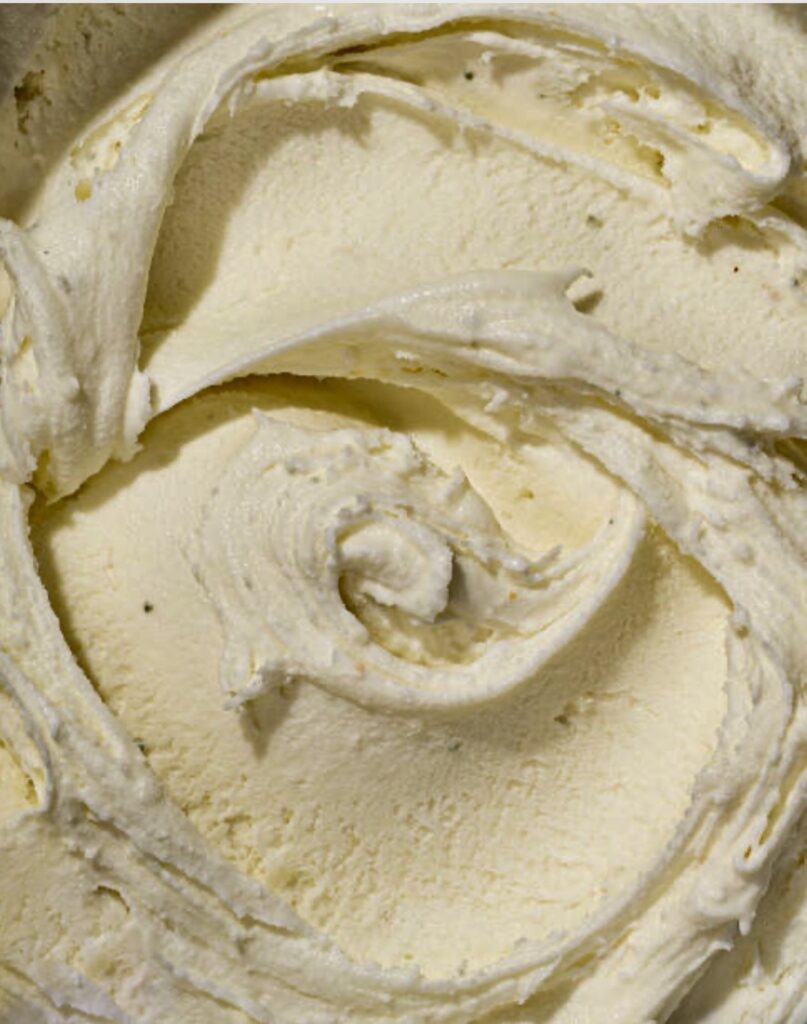
Cream Cheese Frosting
What can I say to you, cream cheese frosting, that you have not already heard? What accolades or verses of praise and love that you have not already been adorned with? You are tangy, thick, and velvety with complex flavor that cannot compare. Let’s face it, people eat the cake you grace to simply get to you. Your following is eternal and devout.
Cream cheese frosting. We all know it, and we all love it. Let’s face it, the only reason we eat carrot cake it to eat the cream cheese frosting – the more the better. Although, I must confess, I have a pretty gosh darn good carrot cake recipe that I think can stand up to the most loved cream cheese frosting. Like American Buttercream, cream cheese frosting is very simple to make: combine cream cheese, butter, vanilla, and powdered sugar, mix. Voila! An instant classic adored by all, and when combined with a spice forward carrot cake, is the perfect combination.
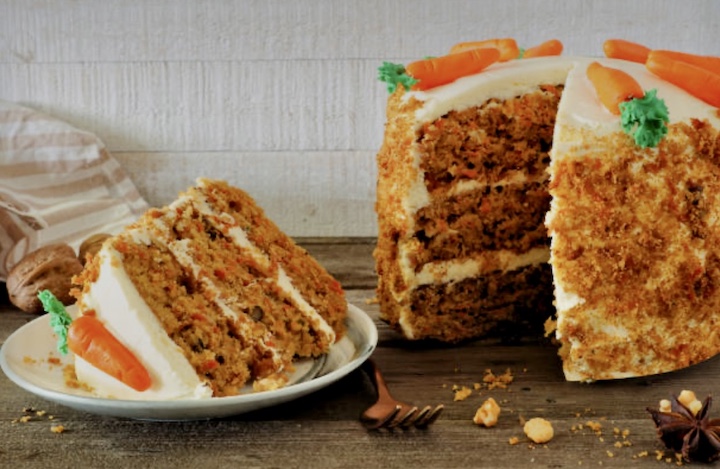
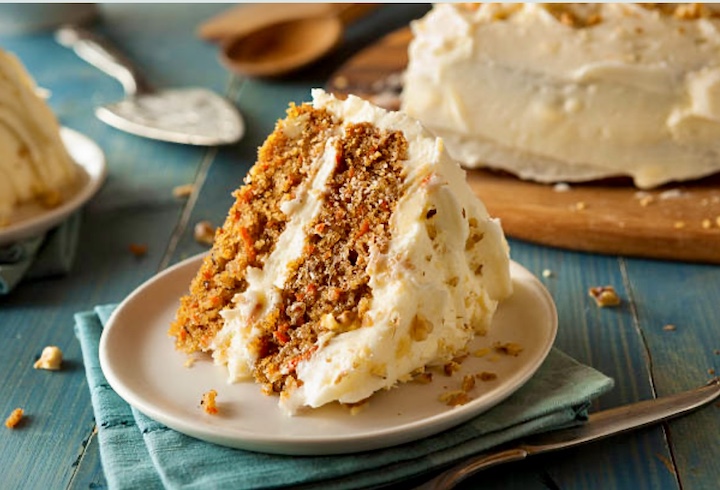
Ermine AKA Boiled-Milk Frosting
To my childhood favorite: Sweet nostalgia and happy childhood memories embody each taste of your thick, creamy fluffiness. Most of my birthday cakes and especially my wedding cake was enrobed in your lusciousness. Even as an adult, I find myself making you again and again for your unique flavor that reminds me of late nights with the woman who made you as she taught me her trade of cake decorating for my 4H projects. I will forever love you.
Ermine or Boiled Milk frosting is the frosting I grew up eating. I was told it was my Grandma Daugherty’s recipe, but it was my Cousin Lori, who made it her own. And yes, this was indeed the frosting on my wedding cake as Lori lovingly made my wedding cake for me. For this frosting, you make a pudding base with flour, granular sugar, and milk. Allow that to cool, then add slowly to your whipped butter. The texture again, light, creamy and a dream to work with when decorating cakes. The flavor. Oh, the flavor. Not too sweet with a unique taste due to the flour/milk mixture that lends a pastry-like taste. It is truly one of my favorites and is featured here as I make several cakes with this frosting for loved ones most dear.
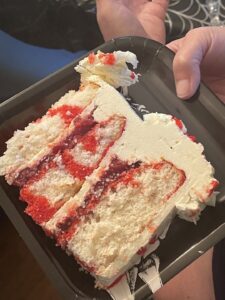
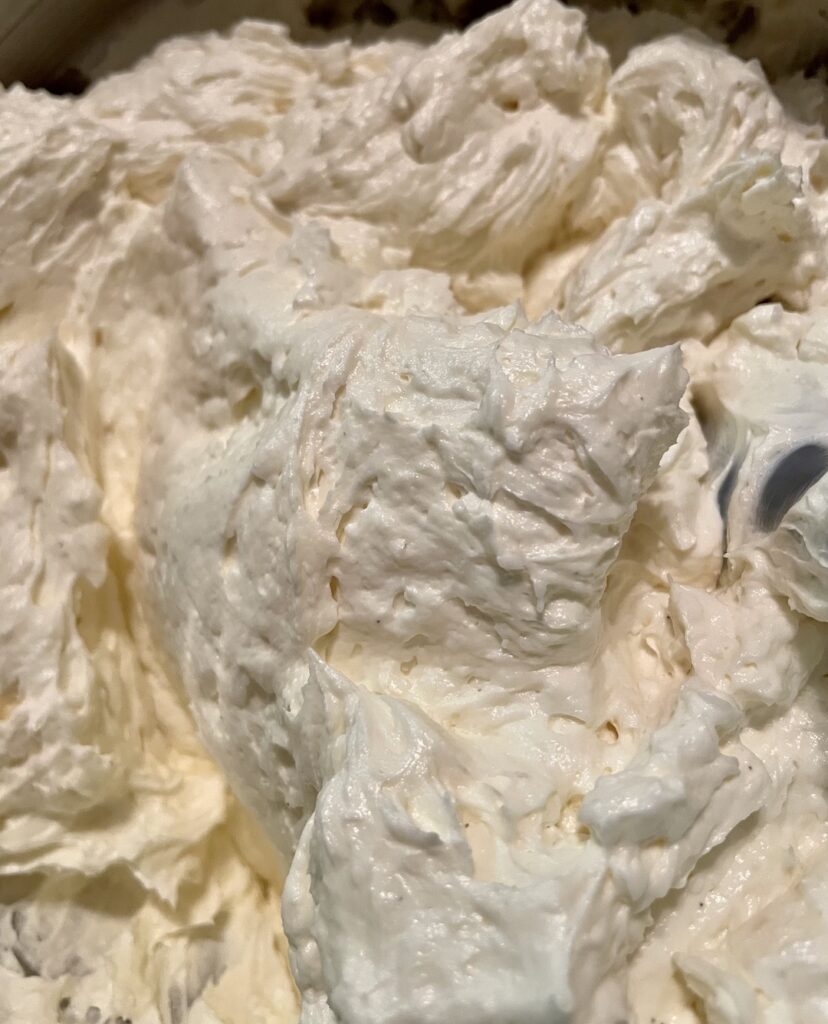
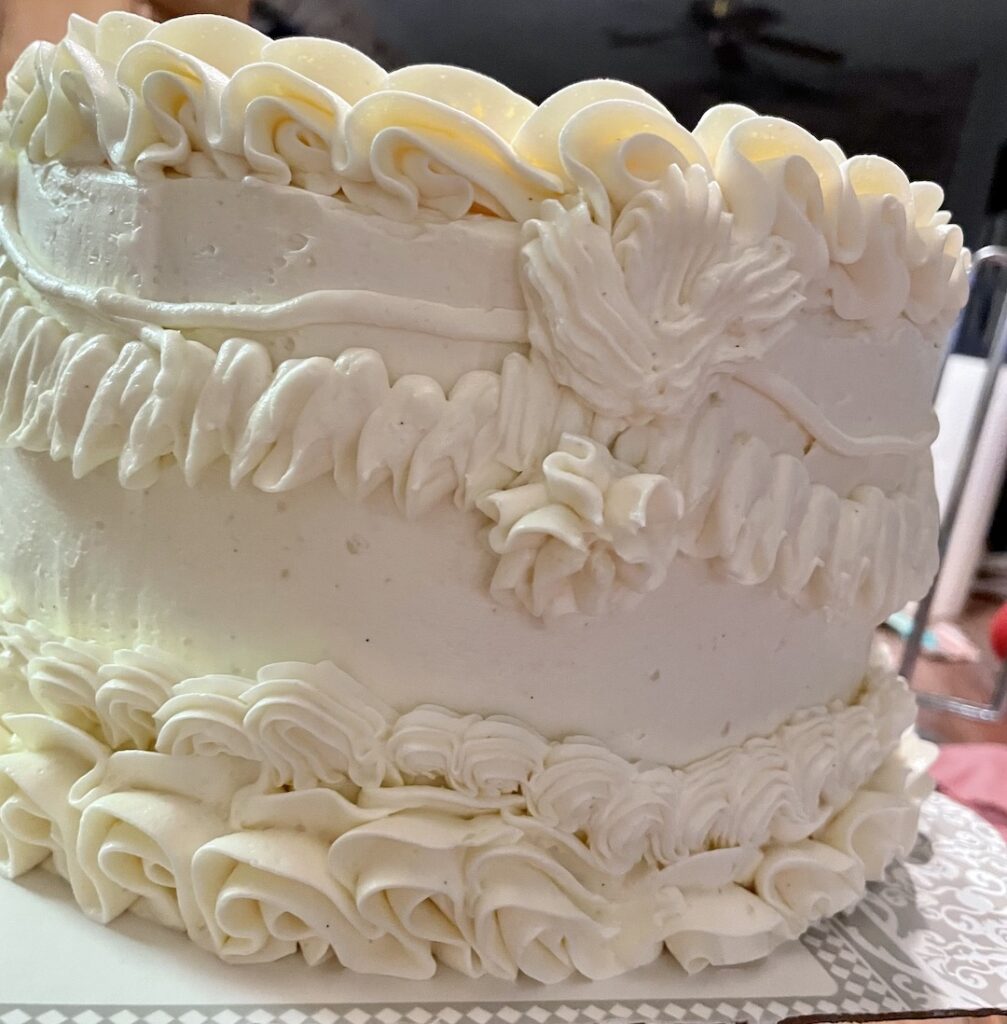
Whipped Cream/Cream Cheese-Whipped Cream Frosting
To my first experimental frosting outside of American Buttercream: You were the first frosting I used outside of traditional American Buttercream. As a child, I loathed you as you were never sweet enough for me. Then I realized your purpose as a lighter, less sweet enhancement for strawberry shortcakes or any fruit cakes as you allowed the cake and fruit to shine while you held them up, and enhanced their natural sweetness. I then added cream cheese to you and you truly shone on your own! The perfect combination of the classical cream cheese tang with the soft sweetness of your velvety peaks. For those who claim they do not like frosting, I refer them to you.
For the classic whipped cream – it is simply whipped cream, vanilla, and powdered sugar (if you want. For some cakes or desserts, I don’t even add the sugar. Then I discovered the whipped cream- cream cheese frosting, and this was a game changer. Especially for people who are not too crazy about frostings in general. This has the reduced sweetness with the beautiful tang of the cream cheese – it is perfect! Light and airy due to the whipped cream but it harkens to the memory of classic cream cheese frosting without being heavy like cream cheese frosting. Please refer here for a wonderful recipe!
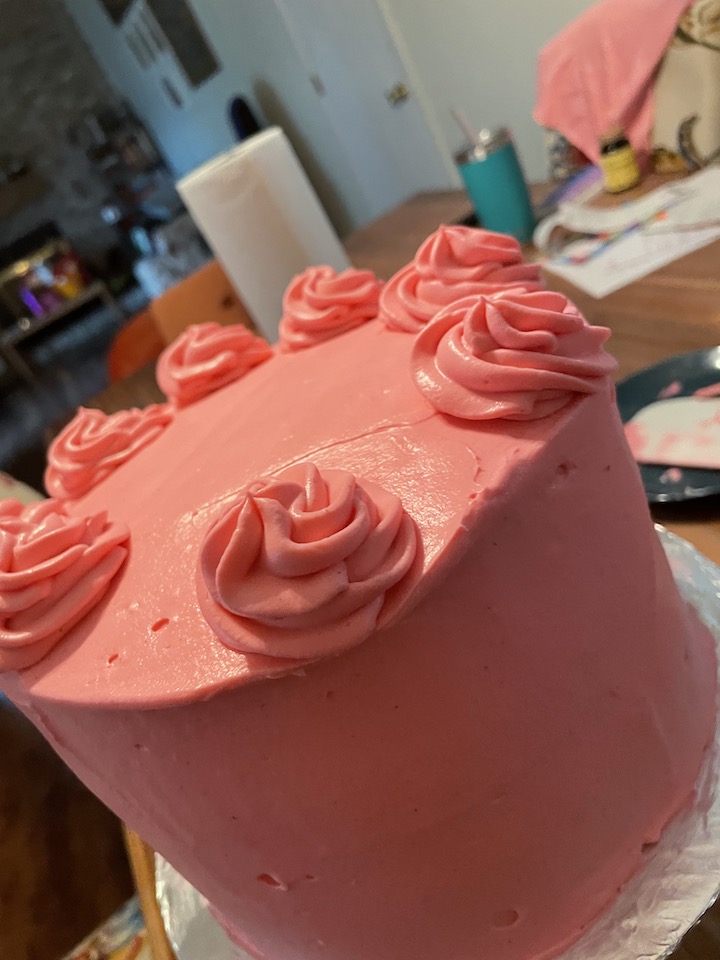

Swiss Meringue Buttercream
To my first foray into cooked frostings: you are light and creamy, like a cloud on one’s tongue, you are rich without being too sweet. The perfect combination that most baker’s use. I discovered your luscious ways through my Claire and have honestly never looked back.
Swiss meringue is made by combining egg whites and sugar and cooking it over a water bath until it is no longer gritty (meaning the sugar as melted). Take this mixture and place on your mixer with the whisk attachment, and whisk until cooled to room temperature. Then slowly, oh so slowly, add your butter and flavoring. Then you have created the most pipe-able frosting known to Bridget-kind. It is truly wonderful to work with!! And the taste! Again, people who do not care for traditional frostings, will like this, as once again, it is less sweet but holds a delightful mouth-feel: it is like tasting the clouds. It is so light while also retaining its creaminess with the added richness of the butter. With patience, this too can be one of your go-to frostings and to learn more, please click here as I chronicle my first adventures in conjuring this frosting.
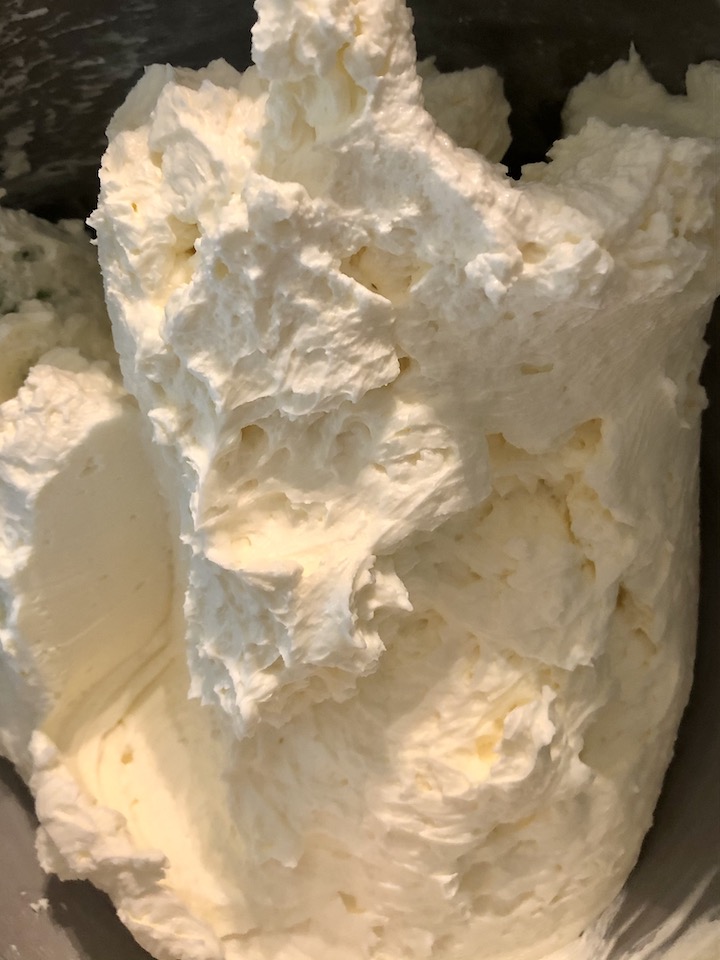
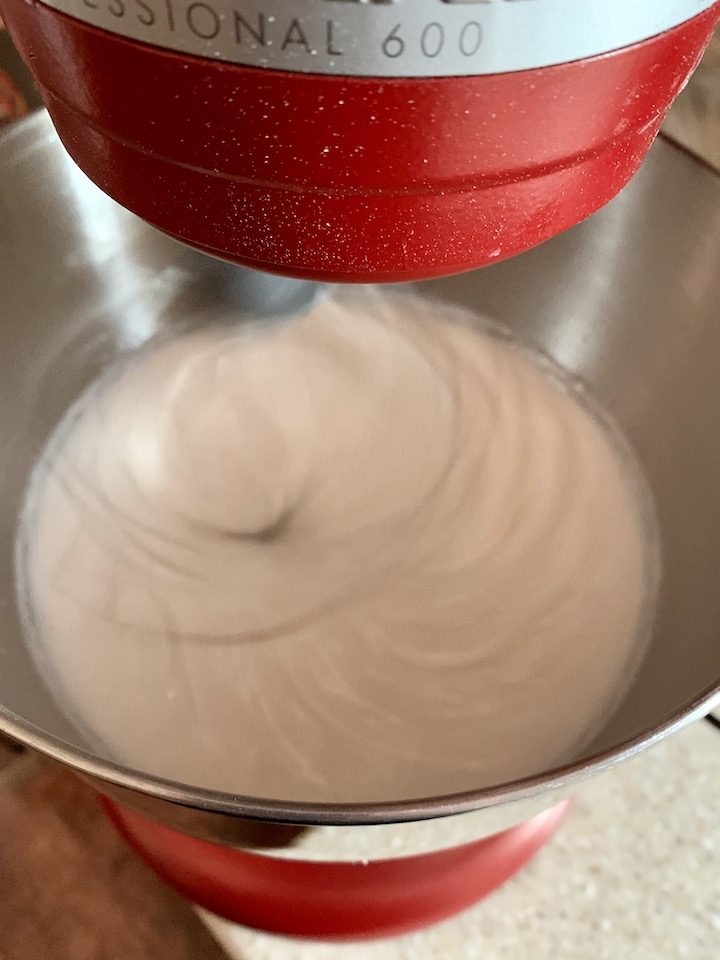
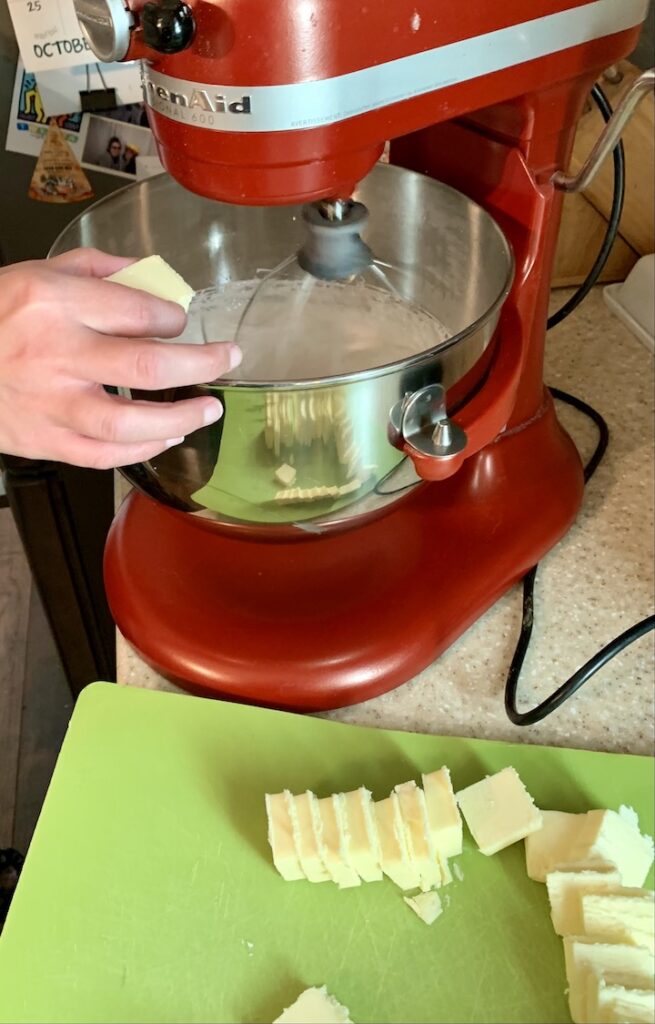

French Buttercream
AND NOW!!!! I introduce to you, my ridiculously talented cousin, Shea and her narration on making the French Buttercream frosting as I have not attempted this one yet! However, her guidance gives me the courage to try it!! And now: MY LOVELY COUSIN SHEA!!
“I recently (and somewhat accidentally) took a stab at a French style buttercream while making a galaxy cake for my nephew’s first birthday party. I have been devouring Claire Saffitz’s cookbook, Dessert Person and had also been eyeing her recipe for chocolate buttermilk cake. She recommends making it with her recipe for “silkiest chocolate buttercream,” which looked incredible in the photo.
I decided to do a test run of the cake to see how it would turn out. The cake part of the recipe came together smoothly, but the buttercream required several tries before I was able to get the texture down. I honestly didn’t know much about French buttercream before making this recipe. The description explains that making a French buttercream requires a “bit of choreography,” and Claire Saffitz ranks this one a difficulty 4/5. It entails “streaming hot syrup, cooked to precise temperature, into whipped egg yolks, then beating in softened butter and melted chocolate to form a smooth, stable emulsion.” The process sounded similar to an Italian meringue buttercream, so I entered this one with a false sense of confidence. I didn’t realize that using yolks instead of whites (like in Italian buttercreams) would be so much less forgiving.
During attempt #1, I made a rookie mistake and didn’t read all the instructions before starting. I whisked the sugar syrup as it heated up on the stove, and it all crystalized and clumped up. After rereading the recipe, I realized that I was supposed to stop stirring as soon as the mixture came to a boil (oops). During attempt #2, I deflated my buttercream by adding melted chocolate that was too warm. The recipe calls for melted and cooled semisweet chocolate with the note, “make sure your chocolate is completely cooled before adding it, but at the same time it should be very liquid.” I was very excited after things worked out a bit better with attempt #3! I finally got my timing down (the yolks have to be whipped to a ribbony texture as you are simultaneously heating your sugar syrup to 238 degrees.) When I added my softened butter, I panicked after seeing that my frosting started clumping together. The recipe says that if this happens you should “just keep beating.” I put my hands on the bottom of the bowl of my stand mixed to gently warm up the butter, and thankfully after about 5 minutes it started to emulsify. The result was a very rich, custardy, smooth, and not overly sweet buttercream.
Although this process definitely challenged my baking skills, I would make it again in a heartbeat! I am not a huge fan of American buttercreams and find them to be too sweet, so the French buttercream was right up my alley. I have read that French buttercream is a great choice for taste and texture, but can be more difficult to pipe or decorate with due to its soft and creamy texture. I ended up using the French buttercream to fill the layers of my cake and made a small amount of American buttercream to decorate the outside which seemed to work well!”
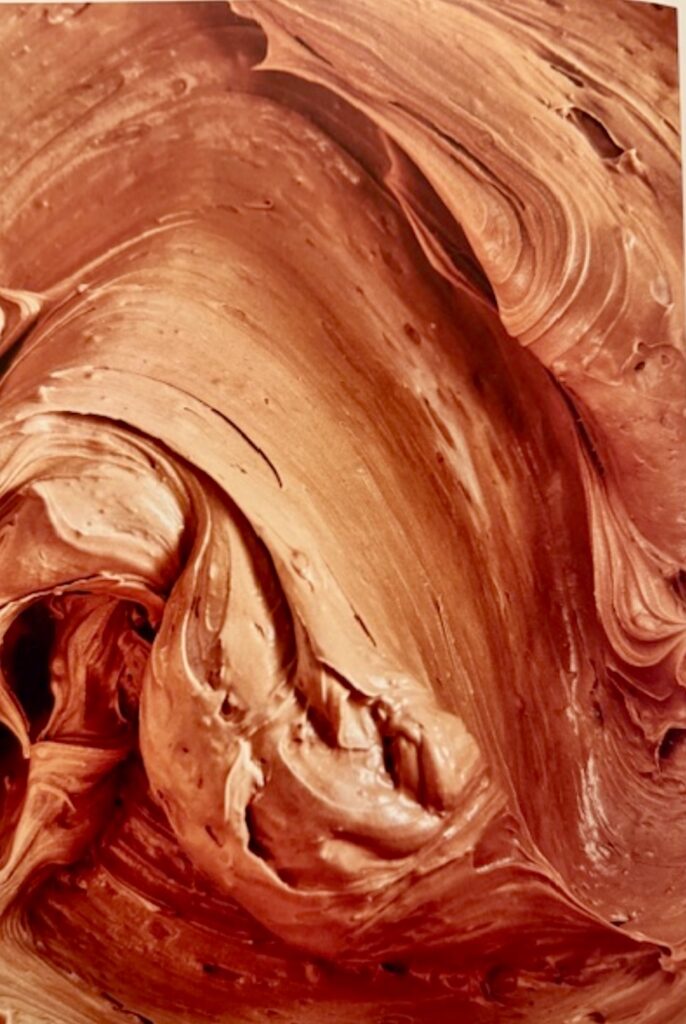
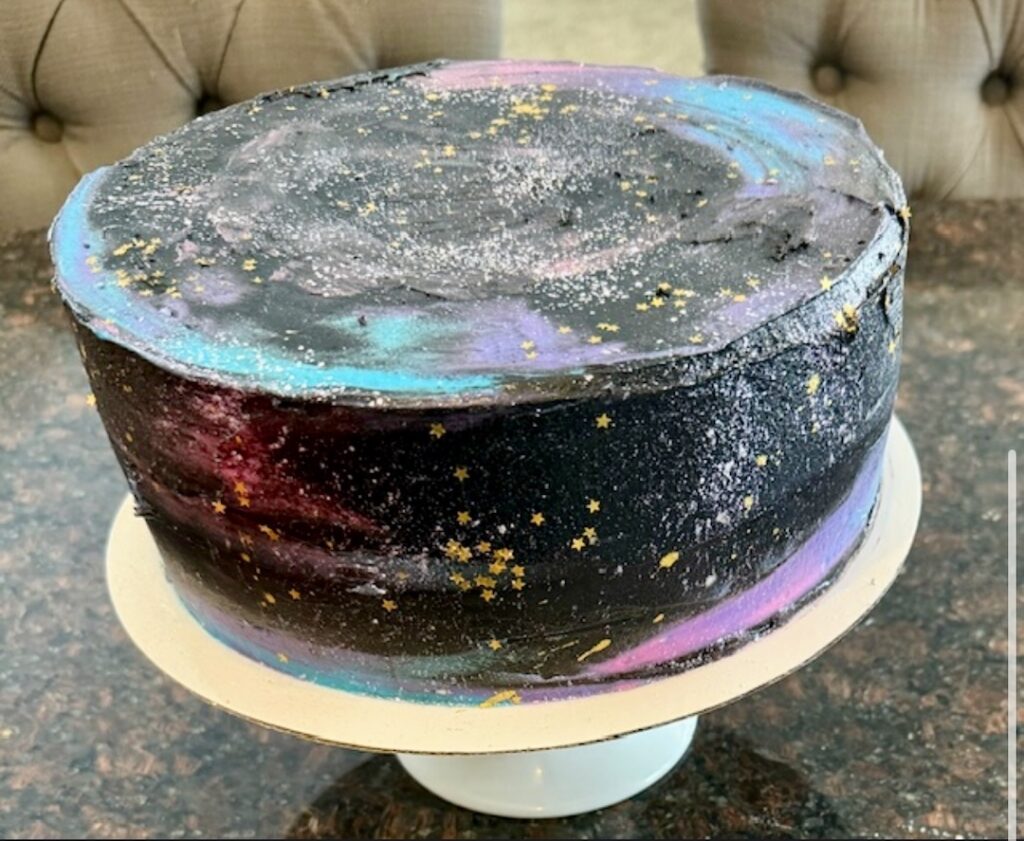
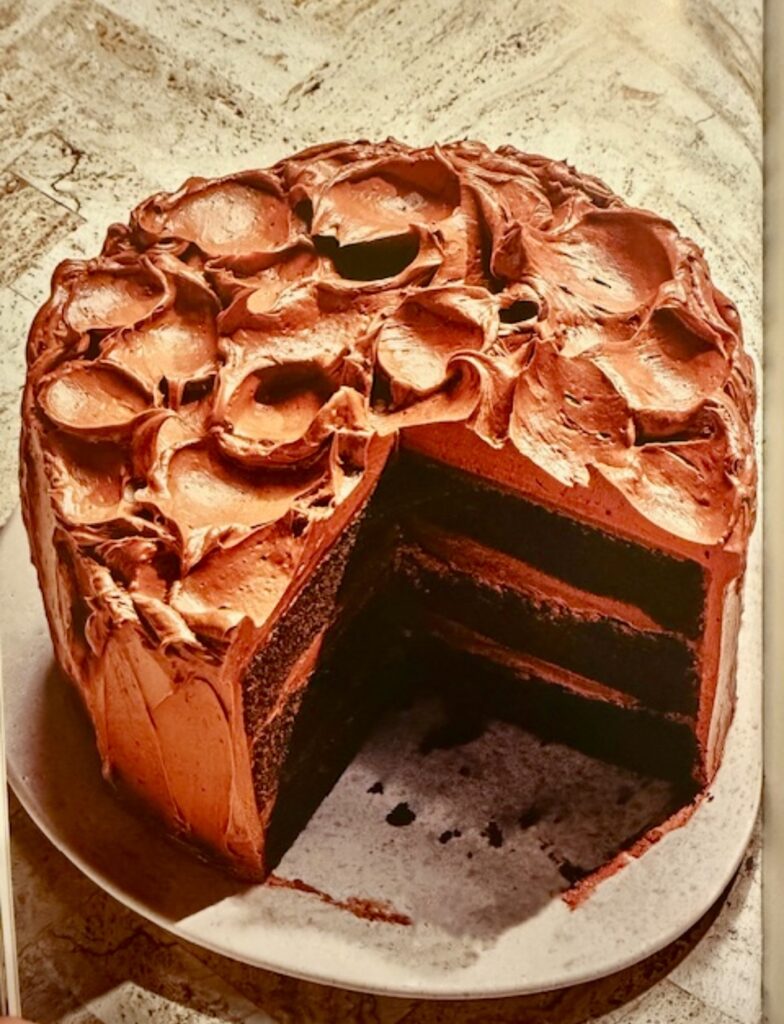
Italian Meringue Buttercream
To the other frosting I have yet to make or taste (I’m pretty sure): You seem just as dreamy as Swiss and French buttercream, I just haven’t gotten around to try you out. I am sure that eventually, I will summon up the courage to try it out. When I do, I promise to sing to your glory in a blog. LOL. The reason I included you in this blog is to explain the differences between Swiss, French, Italian, and Russian buttercreams as many of my friends were asking me the difference.
This is also a cooked frosting, if you will. For this one, you whip the egg whites, salt and cream of tartar, then slowly pour in your granulated sugar: beat until soft peaks form. While you are whipping the egg whites, add more sugar and water to a saucepan and cook until temperature reaches 235-240F. Then pour this very very slowly into the meringue mixture and mix until it all cools down. Once it has cooled down, add your room temperature butter. Whenever I get to making this, I will definitely let you know how it goes. I am sure much cursing will occur while I make this. LOL. Again, most people comment on the flavor and texture as not too sweet with a velvety and satiny texture. One to try for sure! If you want more, or want to make this, check out this site here, as it has easy instructions with pictures attached at each step!
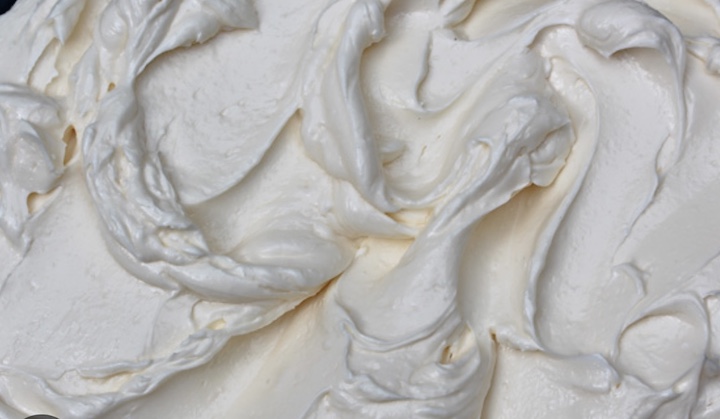

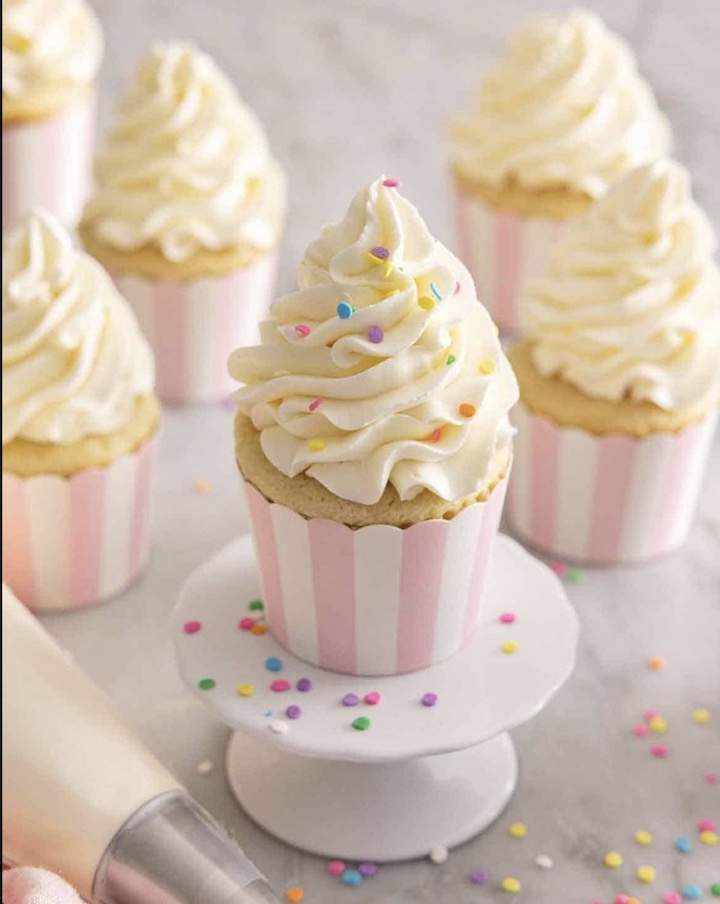
Russian Buttercream
My dearest, newly found love: I made you for my recent birthday cake, and I was not disappointed. Your whipped, silky texture was heavenly, while your flavor was a luscious, buttery dream that is not too sweet, like that of your cousins from different countries. I open my arms to you, and am so happy that I did as your construction is much less complex than others, which makes you more attainable to new, and experienced, bakers alike.
This is a brand new frosting that I recently made in my January post, here. This one is nice and simple, perfect for beginning bakers. You take your butter and sugar and whip the tar out of it. I mean it, whip it until almost white. Then add one can of sweetened condensed milk – continue to mix until you get that thick, creamy fluffiness that is the signature of most buttercream. Don’t panic about the can of sweetened condensed milk, this isn’t too sweet. Honestly, this frosting reminded me of my Swiss Meringue. I highly suggest making this one, as it is the definition of minimum effort for maximum results. For a Valentine’s Day treat I will make a trifle with this frosting, vanilla pudding, and my newly discovered vanilla cake.
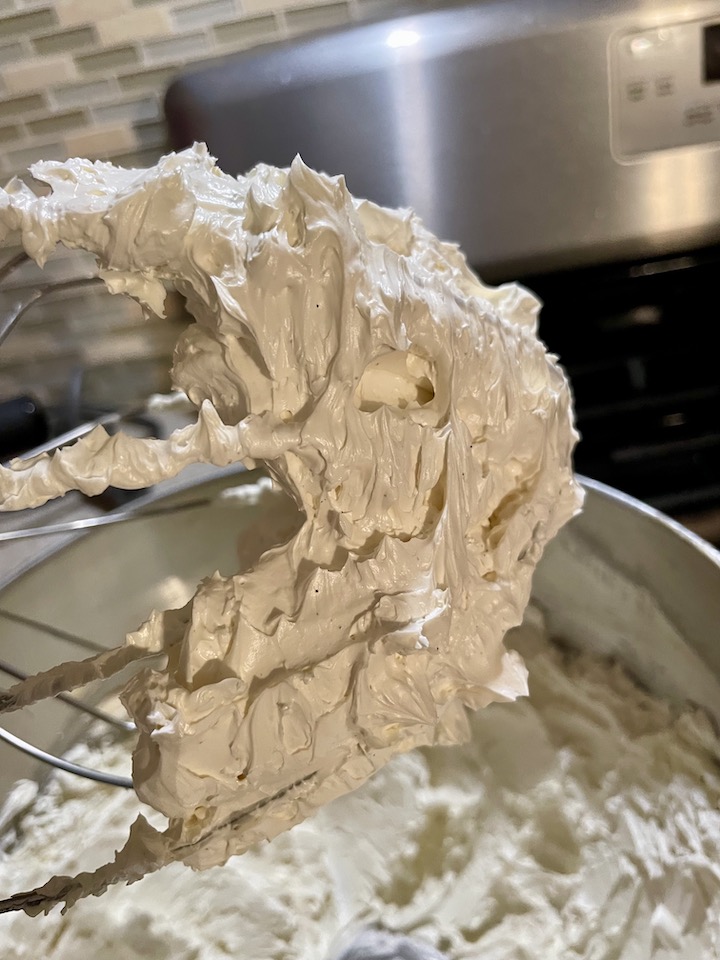
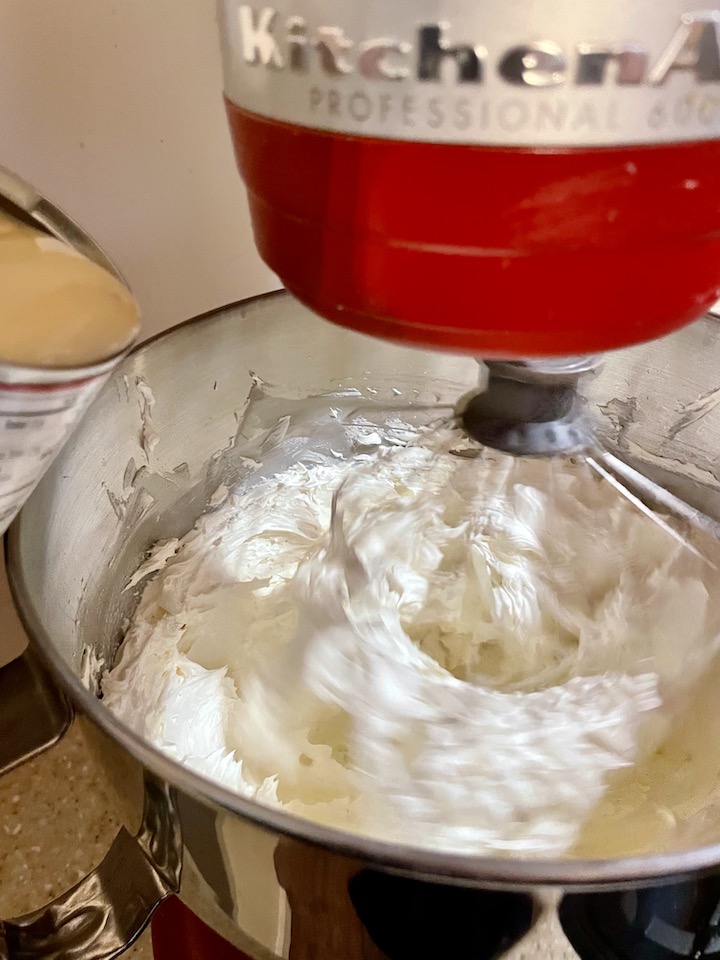
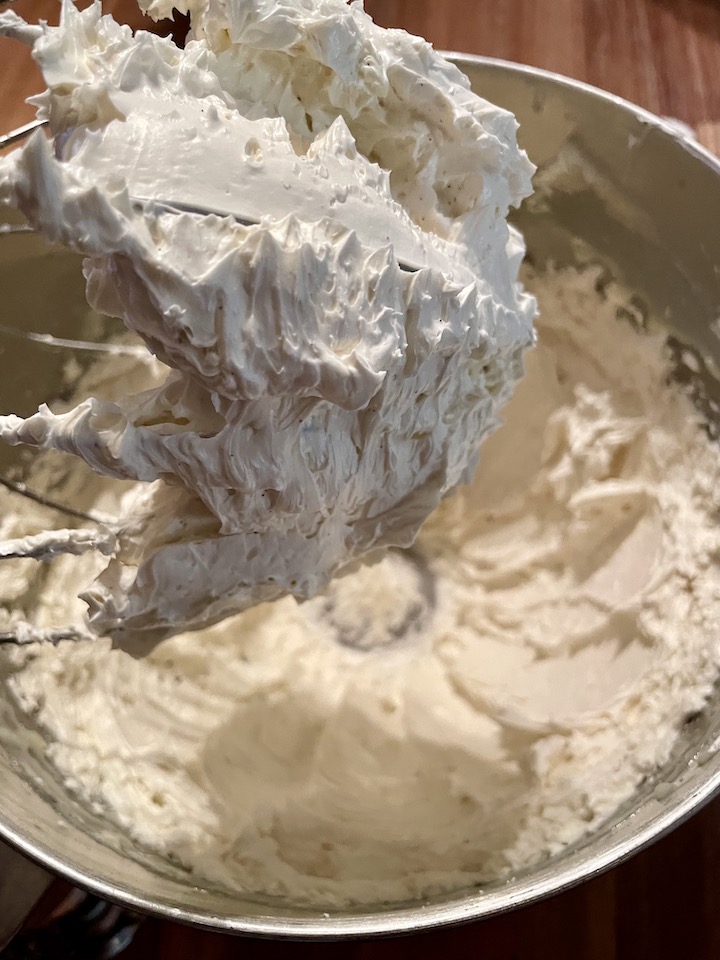
O! I know something I won’t tell
Someone loves you awfully well,
If you will be my Valentine,
All my baking secrets shall be thine.
I’ll share my frostings all with you,
Give you half my ice cream too,
Give all of my cakes and sweets if you were mine,
If you would be my Valentine.
In Conclusion
I hope that this fun little Valentine’s Day post was both fun and educational. My point in writing this post was to hopefully help everyone’s confusion in trying to understand the difference between the many different types of frostings. I hope you have a wonderful Valentine’s Day with a glorious slice of cake with at least two inches of creamy and lush frosting!
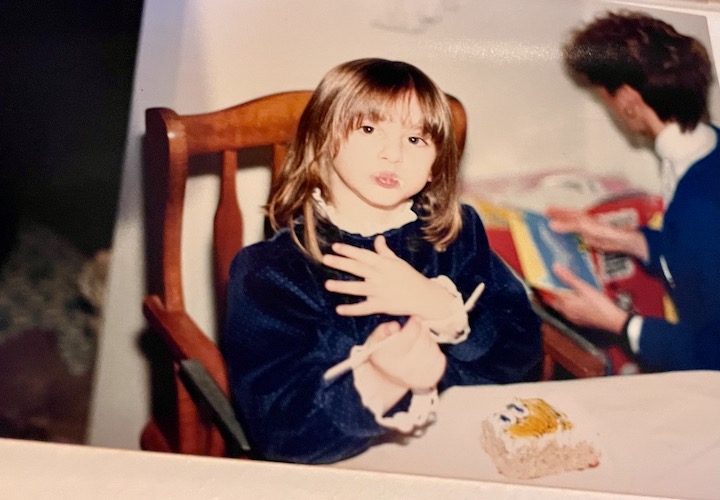
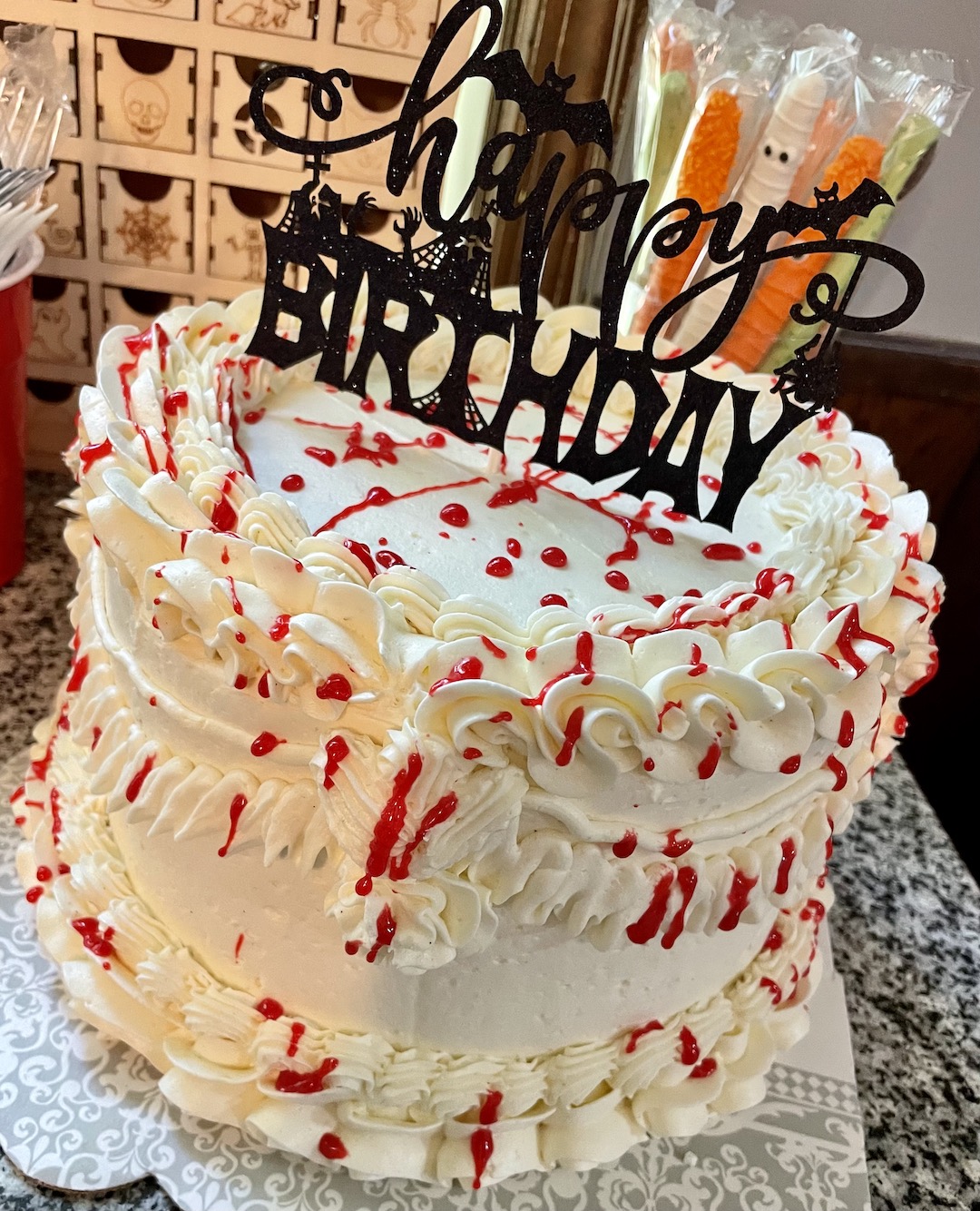
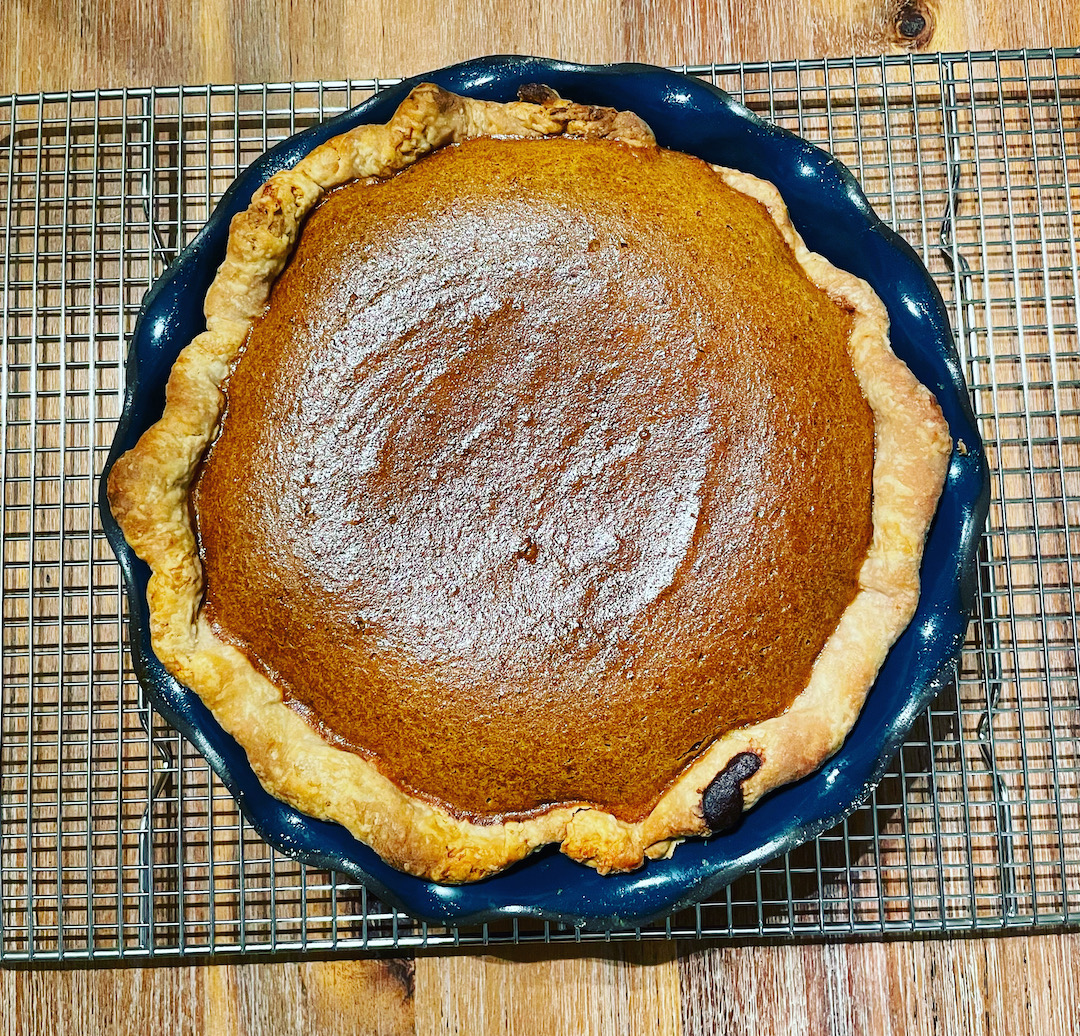
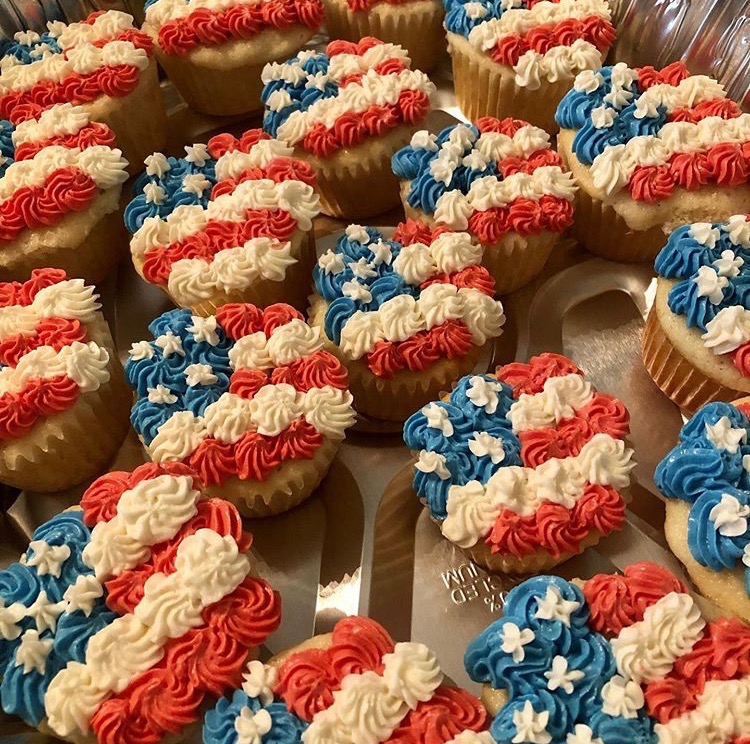
Love it! Now I want to go whip up some frosting!
Me too!! HAHAHAHA
WOW, this was wonderful! What a great Valentine gift . I can’t wait for the birthday cake next week.
. I can’t wait for the birthday cake next week.
Happy Valentine’s Day!! I am glad you enjoyed the post!
Amazing, woman!!! Love this!
Thank you so much!!